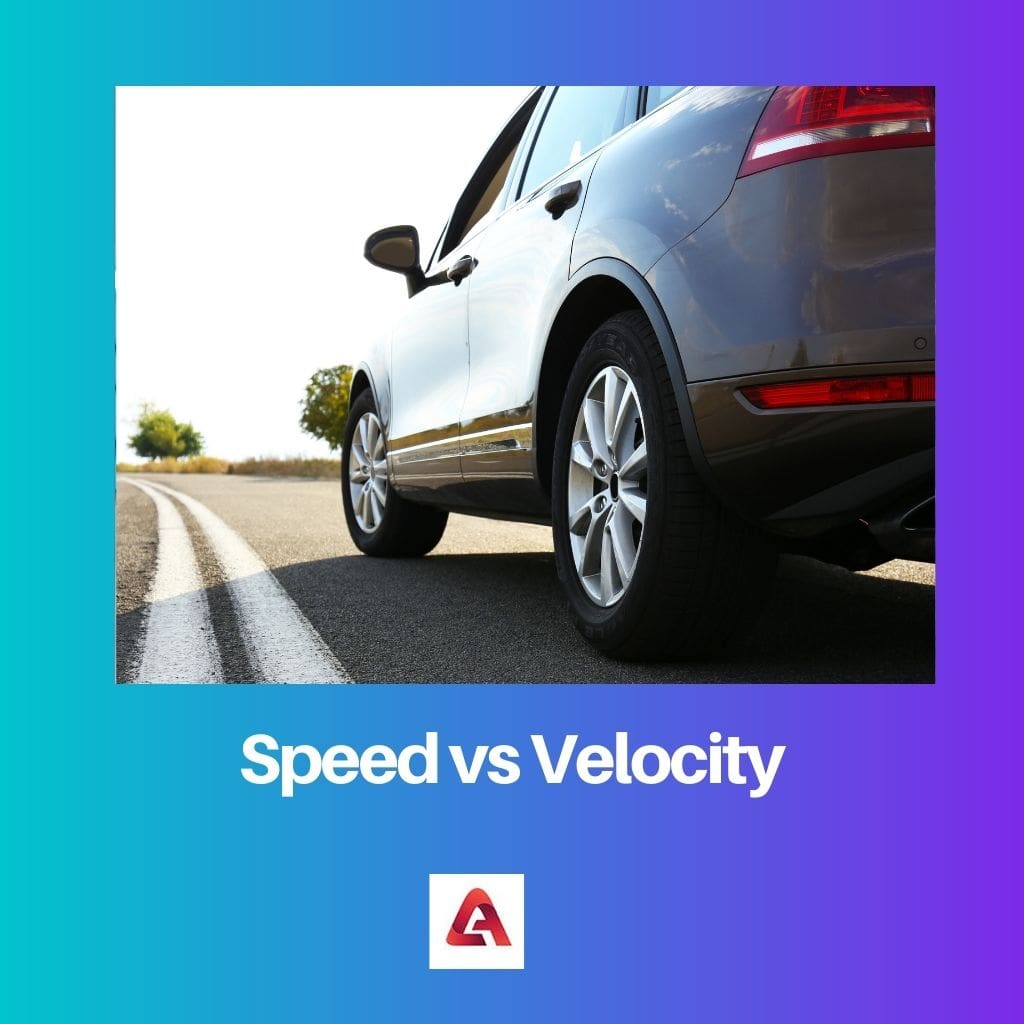In today’s life, we relate speed to the rate at which something moves. To better understand the internet ‘speed’, vehicular ‘speed’ etc., this is the common understanding of speed and is confused with Velocity.
Both terms are terms related to physics. However, when we go back to the conventional definitions of speed and velocity, we find that both of them are significantly different from each other.
Key Takeaways
- Speed is a scalar quantity that indicates the rate of motion, or the distance traveled per unit of time, without considering direction.
- Velocity is a vector quantity that considers both the magnitude (speed) and direction of motion.
- Calculating speed requires only distance and time, while velocity involves considering the change in position and the direction of movement.
Speed vs Velocity
Speed is a scalar quantity. It is the rate of the motion of an object along a path. Even if an object changes direction, the speed will still be constant. While velocity is a vector quantity. The rate and direction of an object’s motion. As the object’s direction shifts, so does its velocity.

This means that velocity is a broader concept which includes both the aspects, of magnitude and direction.
Since speed considers only the magnitude, it is said to be a scalar quantity, while velocity is called a vector quantity because of the inclusion of both magnitude and direction.
Comparison Table
| Parameter of Comparison | Speed | Velocity |
|---|---|---|
| Definition | It refers to the magnitude of the change in the position of an object. | It refers to the magnitude of the change in the position of an object but in a specific direction. |
| Category | It is a scalar quantity because it only includes magnitude. | It is a vector quantity because it includes both magnitude and direction. |
| Concept | Speed is a narrower concept. | Velocity is a broader concept. |
| Calculation | Speed is calculated as the difference travelled per unit of time. | Velocity is calculated as the displacement of a thing per unit of time. Displacement refers to the distance travelled in a particular direction. |
| Indication | It indicates how rapidly an object is moving. | It indicates how rapidly an object is moving along with its position. |
| Value | Speed cannot be negative. | Velocity can be harmful or zero. |
What is Speed?
Speed refers to the distance covered by a body in unit time. In other words, it portrays the relationship between the distance travelled and the time taken to travel that distance.
It can be measured in several units, such as kilometres or meters with respect to the distance and per second or per hour with respect to time.
Speed is a scalar quantity since it includes only magnitude, and thus, it is only represented in numerical terms. And since it is a scalar quantity, speed can never be negative.
The SI Unite of speed is meter/second. However, we commonly use the unit kilometre/hour to calculate the speed of a body.
A sub-component of speed can be the average speed. Average speed is basically the distance travelled by a body divided by the time taken to cover that distance.
The formula for calculating speed is the distance traveled divided by the time taken to cover the distance. Speed is directly proportional to distance and inversely proportional to the time period.
In other words, speed increases when the distance increases and the time period remains the same.
And if the time period increases while the distance remains constant, it means that the speed has fallen down.

What is Velocity?
Velocity refers to the rate of change in the position of a body with respect to the magnitude as well as the direction. To extend, unlike speed, velocity also considers direction along with magnitude.
This is why it is a vector quantity.
The SI Base Unit of velocity is meter/second. In order for it to be a vector, a direction also needs to be specified.
For instance, if it is said ‘10 m/s’, it will refer to speed, whereas ’10 m/s north’ will signify a vector.
Velocity ideally has two sub-components, average velocity and relationship with acceleration. The normal velocity is also called instantaneous velocity to distinguish it from average velocity.
Average velocity, however, refers to the constant velocity which, when found out, would provide the same resulting displacement and period, in the same direction.
When there is no change in the magnitude or direction of a vector, it is called a constant vector. However, when the magnitude or direction or both of them undergo a change, they are said to be undergoing acceleration.
Velocity can be calculated as displacement divided by the time period.
Displacement is a term that is inclusive of both magnitude and direction. Therefore, velocity is directly proportional to the displacement and inversely proportional to the time period, so to speak.

Main Differences Between Speed and Velocity
Even though speed and velocity are closely related and quite synonymous, there exist particular clear distinctions between them.
- The most significant distinction is that speed is a resultant of only distance and time, which includes only magnitude whereas velocity is a result of displacement and time, which includes both magnitude and direction.
- Due to this major difference, another significant difference arises, which says that due to the inclusion of only magnitude in speed, it is a scalar quantity and since velocity includes both speed and direction, it is said to be a vector quantity.
- Moreover, due to these very reasons, we can confidently say that speed can never be negative, whereas velocity can be harmful.
- Furthermore, these differences also portray that speed indicates only the rapidness of an object. On the contrary, velocity indicates the rapidness along with its position or direction.
- As previously mentioned, speed is calculated as distance divided by the time period and velocity is calculated as displacement divided by the time period. The term distance only indicates magnitude, whereas displacement indicates both magnitude and direction.


The article provides a clear and comprehensive overview of the fundamental differences between speed and velocity.
I couldn’t agree more. The clarity of the article is commendable.
The content is presented in a logical and well-organized manner. The distinction between speed and velocity is clearly defined and substantiated. Great work!
I’m not convinced. The article could have been more entertaining rather than just stating facts and definitions.
I’m inclined to agree with you. The article’s presentation is commendable.
This article provides a clear understanding of the difference between speed and velocity, and how they can be calculated. It’s a very informative piece of content.
I agre with you. Very informative indeed.
I’m not sure that the content really adds value. It’s mostly common knowledge.
The article does a good job at explaining the difference between speed and velocity. The comparison table is quite useful and makes it easier to identify the contrasts.
In my opinion, the article could have delved deeper into the practical applications of speed and velocity.
I appreciate the clear explanation of speed and velocity in this article.
The article succeeds in elucidating the nuances of speed and velocity effectively, making it an enlightening read.
I think the article could have been presented in a more engaging manner, catering to a wider audience.
Indeed, the elucidation of concepts is praiseworthy.
I appreciate the informative nature of the content. The article is succinct and provides a thorough understanding of speed and velocity.
I completely agree. The brevity and clarity of information are laudable.
The article’s delineation of speed and velocity is commendable. It manages to maintain a high level of intellectual rigor throughout.
I concur. The intellectual rigor is certainly noteworthy.
I found this article to be an excellent source of knowledge. It’s refreshing to come across content that is both intellectually stimulating and easy to comprehend.
This article offers a comprehensive understanding of speed and velocity. It’s a valuable read.
This piece is both informative and insightful. A valuable contribution to understanding the fundamentals of speed and velocity.
Absolutely. The clarity and precision of the content are commendable.
I feel that the article could have been extended to include real-world examples of speed and velocity in various fields.
The article methodically lays out the distinctions between speed and velocity, offering a comprehensive understanding of both concepts.
I’m glad the article has been received positively. The clarity of information is indeed praiseworthy.
It’s a bit too dry for my liking. Perhaps a touch of humor could have made it more engaging.